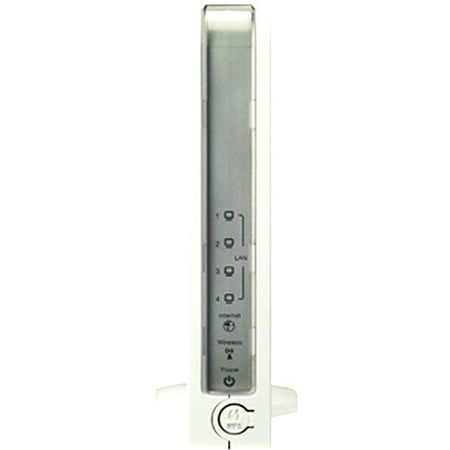The wireless access points, bridges, and clients enable business and home users to expand or link their wired networks without using cables.This reduces the time and cost for expanding networks while allowing users to conveniently access local networks and internet services.
Hybrid Wireless Access Point/Bridge/Client devices
These wireless functions are usually available from stand-alone devices or as features of hybrid devices. The all-in-one devices have the following operational modes.
Wireless Access Point (WAP)
The wireless access point expands the wired network into the wireless space, hence allowing more devices within the WLAN coverage area to access the network. A WAP can be added to any existing wired LAN without acquiring other equipment. It comprises an Ethernet port and a wireless transceiver for sending and receiving radio signals to and from the WI-FI devices, hence allowing them to connect to the local network and internet.
Figure 1: ASUS RT-N13U Wireless-N Router, Access Point, and Repeater

The above ASUS RT-N13U Wireless-N Router, available at Walmart, distinguishes itself with the “auto switching” function. It not only enables multiple users to use the multifunction printers wirelessly without a PC or server turned on 24 hours a day but also rules out the trouble of repeating “disconnecting” and “re-connecting” when users switch. When different users are to use the printer, the router switches automatically, which enables different users to use the printer simultaneously.
Wireless Bridge
A wireless bridge, also known as a point-to-point, or wireless LAN-to-LAN bridge, provides a wireless link between two physically isolated wired networks. This allows businesses to link different LAN segments which are physically separated without having to lay cables.
A bridge comprises at least two devices, each connected to the wired network and then put into the bridge mode to enable the two to talk to one another. In the bridge mode, the access points do not communicate or accept connections from the WI-FI client devices.
The devices in a bridge do not re-transmit to the WI-FI devices, however, they can be configured to do so by using the Access Point + WDS mode.
Wireless Client
The wireless client allows the hybrid device’s router to be configured to connect to another router as a client. In this mode, the router does not re-transmit the wireless signal, but can only share internet access through its Ethernet ports. In this mode, the router will maintain its own separate subnet with its DHCP managing the router’s IP address pool.

Indoor and outdoor Wireless Access Point/Bridge/Client devices
The hybrid devices are either indoor or outdoor, with internal, external, or both antennae depending on design and power output. Majority of the indoor devices, and some outdoor devices, have unidirectional antennae for 360 degrees of coverage, while most outdoor devices use directional antennae to make sure a strong signal is in a certain direction.
The external antennae have different power outputs and may include an installation kit consisting of antennae cables and connectors for mounting at a convenient location and height for the best signal.
Either of the wireless devices provide a convenient and cost-effective method of expanding your network using a minimum number of wires. They are used for both small and large networks and are suitable for homes, offices, and public places, as well as mobile networks such as buses, trains, and airplanes.
Enhanced features such as traffic shaping, power level control, bandwidth selection, security, and others allow organizations to customize their devices to suit their application.
Choose either an indoor or outdoor all-in-one Wireless access point/Bridge/Client device to expand your network in both normal and difficult-to-wire environments. The devices are suitable for homes, and offices as well as for old buildings, open areas, cross-street architectures, and other installations where cabling is either very expensive or impossible.